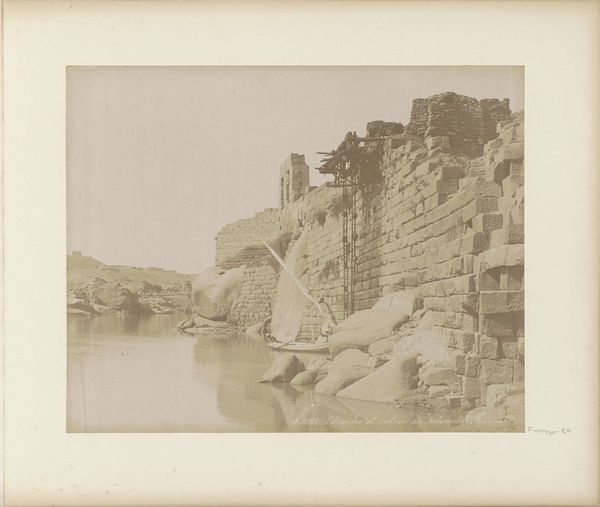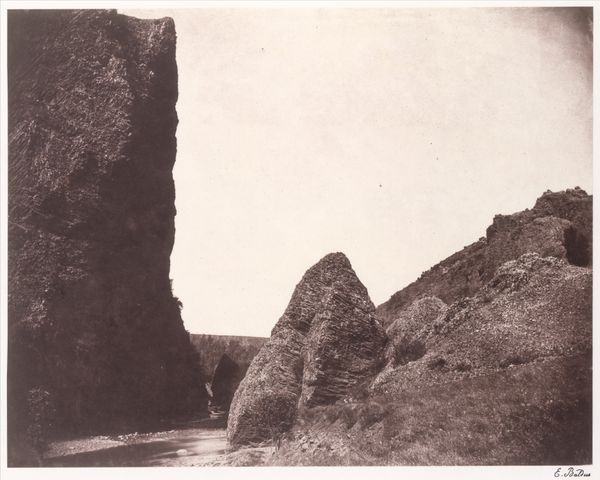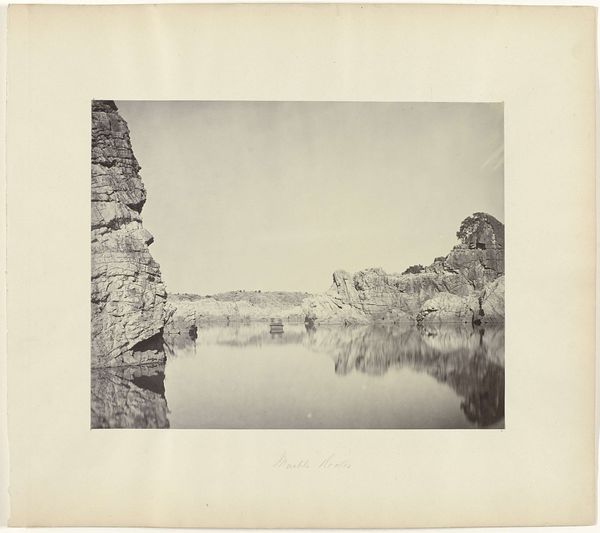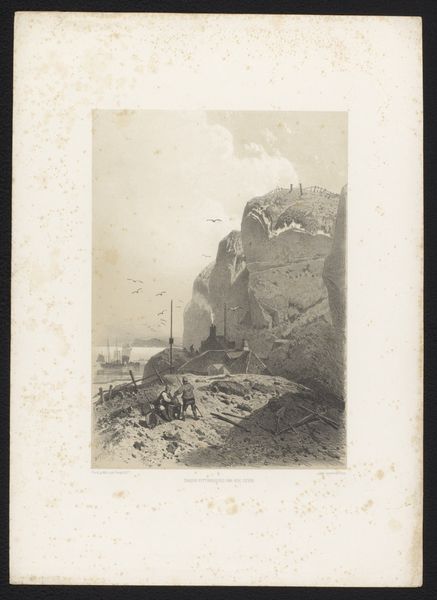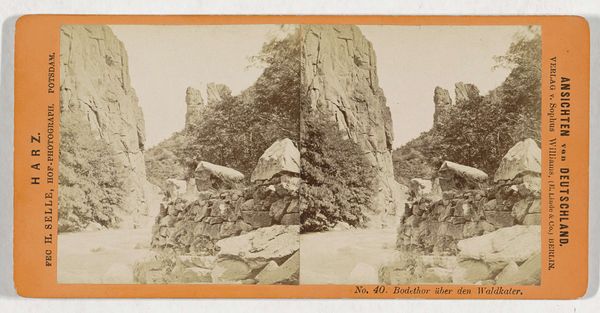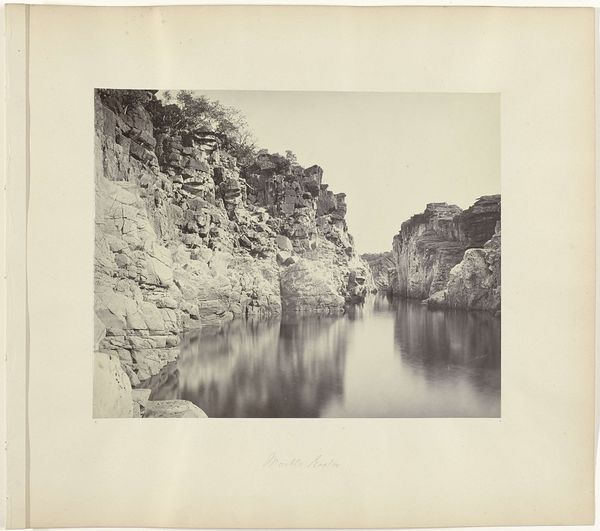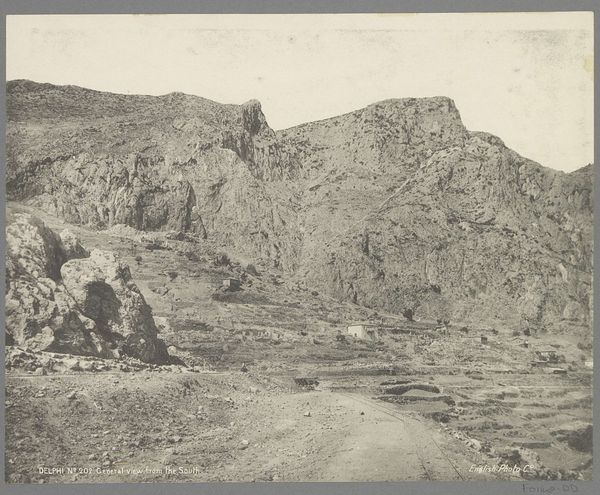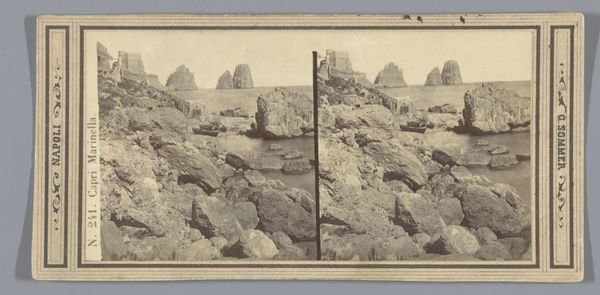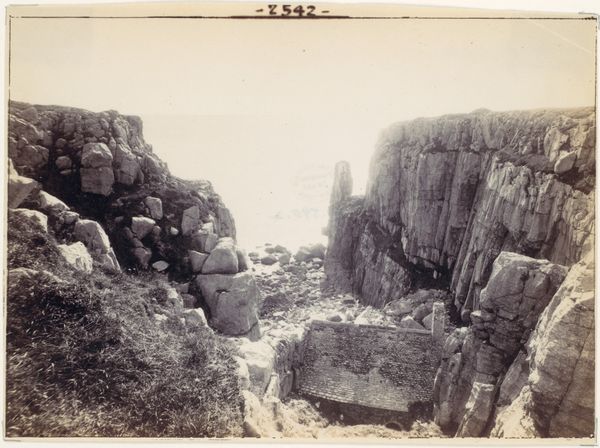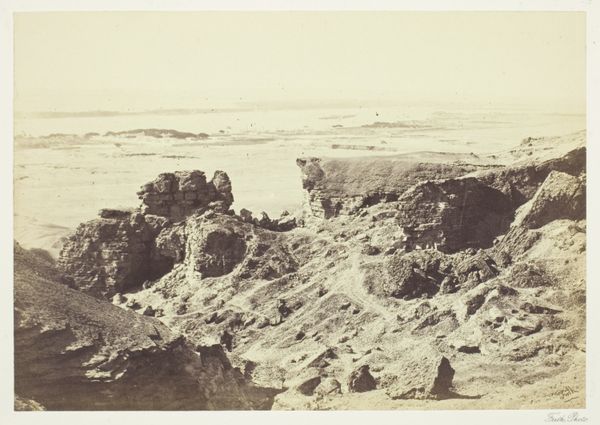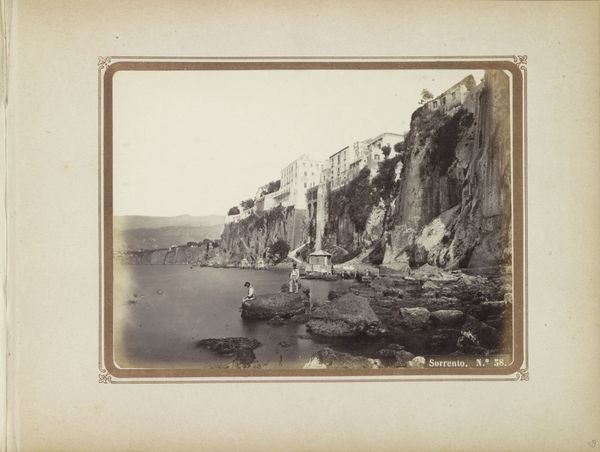
photography, gelatin-silver-print
#
16_19th-century
#
ship
#
landscape
#
photography
#
gelatin-silver-print
#
realism
Dimensions: height 195 mm, width 249 mm
Copyright: Rijks Museum: Open Domain
Editor: So, this photograph, "Gezicht op Marina di Mulo op Capri," attributed to Achille Mauri, a gelatin-silver print from somewhere between 1860 and 1890, is quite striking. It depicts a coastal scene with boats pulled up on the shore, dominated by rocky formations and hints of structures. There’s a sort of grainy quality that speaks to its age, and it feels almost documentarian. What are your thoughts on it? Curator: Looking at this gelatin-silver print, my mind goes to the process itself. Consider the labor involved in capturing and developing this image in the late 19th century. The photographer had to transport heavy equipment, prepare the light-sensitive materials, and meticulously develop the print. What was the accessibility of photography to different social classes in Italy at this time? Did the production of these kinds of images impact tourism or the way Capri was perceived? Editor: That's fascinating. I hadn’t thought about the physical demands or the accessibility of photography. Curator: Exactly! It's not just about the picturesque scene; it's about understanding the means of production. The gelatin-silver process itself was relatively new, replacing earlier, more cumbersome methods. How did this technological shift impact the kind of images that were being created and circulated? Were images being traded? What purpose were the images put towards at the time? Editor: So, you’re saying that focusing on the "how" and "why" of its creation enriches our understanding beyond simply "what" is depicted? I’m also curious about whether the way this print was mounted, circulated, and collected speaks to broader economic and cultural forces at play. Curator: Precisely. It challenges the idea of art as solely aesthetic and points to its function within a larger network of materials, labor, and exchange. Editor: This definitely shifts my perspective. I now appreciate it as more than just a pretty landscape photo. Curator: And understanding photography as part of a larger social and material fabric enhances how we appreciate its importance.
Comments
No comments
Be the first to comment and join the conversation on the ultimate creative platform.
